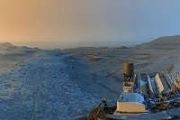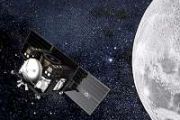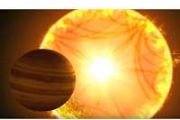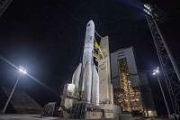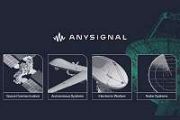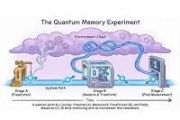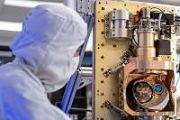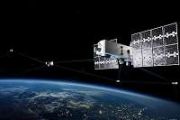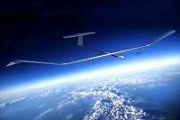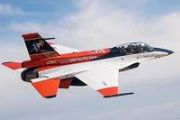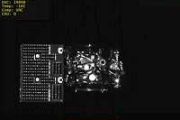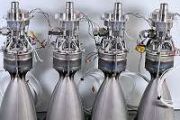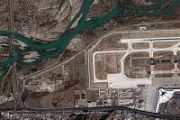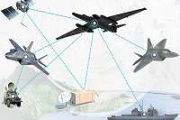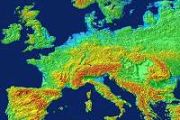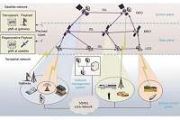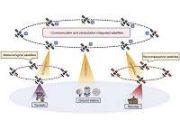
Copernical Team
Spectrum takes flight and clears the launch pad

ExoMars Rosalind Franklin rover will have a European landing platform

The European Space Agency (ESA) has selected Airbus to design and build the landing platform for the ExoMars Rosalind Franklin rover. In 2028, ESA will launch this ambitious exploration mission to search for past and present signs of life on Mars.
Rocket carrying European orbital vehicle crashes after launch
 The first orbital rocket launched from continental Europe crashed seconds after blast-off Sunday, dealing a blow to the continent's bid to build a new space economy.
The Spectrum rocket, developed by German start-up Isar Aerospace, started smoking from its sides, then crashed back to Earth with a powerful explosion just after launching from Norway's Andoya Spaceport in the Arctic, in live vi
The first orbital rocket launched from continental Europe crashed seconds after blast-off Sunday, dealing a blow to the continent's bid to build a new space economy.
The Spectrum rocket, developed by German start-up Isar Aerospace, started smoking from its sides, then crashed back to Earth with a powerful explosion just after launching from Norway's Andoya Spaceport in the Arctic, in live vi Space station advances muscle and semiconductor science
 The microgravity and radiation of space present not only risks to human health but also rare opportunities for breakthroughs in science and medicine, Chinese researchers say.
This dual nature of the space environment came into focus when two NASA astronauts returned from a prolonged nine-month stay aboard the International Space Station, visibly weakened. The challenges they faced undersco
The microgravity and radiation of space present not only risks to human health but also rare opportunities for breakthroughs in science and medicine, Chinese researchers say.
This dual nature of the space environment came into focus when two NASA astronauts returned from a prolonged nine-month stay aboard the International Space Station, visibly weakened. The challenges they faced undersco China logs 15th orbital mission with launch of Tianlian II-04
 China executed its 15th space launch of the year late Wednesday night, successfully placing a new data relay satellite into orbit from the Xichang Satellite Launch Center in Sichuan province. The China Aerospace Science and Technology Corp (CASC), the nation's primary aerospace contractor, confirmed the mission.
Lifting off at 11:55 pm local time, a Long March 3B rocket deployed the Tianli
China executed its 15th space launch of the year late Wednesday night, successfully placing a new data relay satellite into orbit from the Xichang Satellite Launch Center in Sichuan province. The China Aerospace Science and Technology Corp (CASC), the nation's primary aerospace contractor, confirmed the mission.
Lifting off at 11:55 pm local time, a Long March 3B rocket deployed the Tianli Sierra Space expands alliance with Yuri to boost biotech missions in orbit
 Sierra Space, a top-tier commercial space and defense technology company focused on leveraging space to enhance life on Earth, has deepened its collaboration with German space biotech firm Yuri. The new agreement centers on a forthcoming ScienceTaxi BioSpin mission, targeting advancements in microgravity-enabled biological research and pharmaceutical development.
The expanded contract foll
Sierra Space, a top-tier commercial space and defense technology company focused on leveraging space to enhance life on Earth, has deepened its collaboration with German space biotech firm Yuri. The new agreement centers on a forthcoming ScienceTaxi BioSpin mission, targeting advancements in microgravity-enabled biological research and pharmaceutical development.
The expanded contract foll Space telescope Gaia sent into 'retirement' but legacy endures
 Europe's Gaia space telescope was powered down and sent into "retirement" on Thursday after a decade revealing the secrets of the Milky Way, but its observations will fuel discoveries for decades to come.
Since launching in 2013, the telescope has been charting the positions, motion and properties of nearly two billion stars to create an unparalleled map of our home galaxy, according to the
Europe's Gaia space telescope was powered down and sent into "retirement" on Thursday after a decade revealing the secrets of the Milky Way, but its observations will fuel discoveries for decades to come.
Since launching in 2013, the telescope has been charting the positions, motion and properties of nearly two billion stars to create an unparalleled map of our home galaxy, according to the Howard University researcher explores quantum bounds on life's computational power
 Over 80 years ago, Erwin Schrodinger asked a profound question about the nature of life in his 1944 lectures at Trinity College Dublin, later published as "What is Life?" Now, in the 2025 International Year of Quantum Science and Technology, Philip Kurian of Howard University has revisited that question, applying modern quantum mechanics to redefine the limits of biological computation.
Ku
Over 80 years ago, Erwin Schrodinger asked a profound question about the nature of life in his 1944 lectures at Trinity College Dublin, later published as "What is Life?" Now, in the 2025 International Year of Quantum Science and Technology, Philip Kurian of Howard University has revisited that question, applying modern quantum mechanics to redefine the limits of biological computation.
Ku Atmospheres of new planets might have unexpected mixtures of hydrogen and water
 All planets are made of gas, ice, rock and metal, and models of how planets form usually assume that these materials don't react chemically with each other. But what if some of them do? UCLA and Princeton planetary scientists asked that question and got a surprising answer: Under the intense heat and pressure of newborn planets, water and gas react with each other, creating unexpected mixtures i
All planets are made of gas, ice, rock and metal, and models of how planets form usually assume that these materials don't react chemically with each other. But what if some of them do? UCLA and Princeton planetary scientists asked that question and got a surprising answer: Under the intense heat and pressure of newborn planets, water and gas react with each other, creating unexpected mixtures i NASA proves dust shield works in lunar environment
 NASA has successfully tested its Electrodynamic Dust Shield (EDS) on the Moon, confirming its ability to repel abrasive lunar regolith during Firefly Aerospace's Blue Ghost Mission 1, which concluded March 16. This test marks the first demonstration of the technology in the harsh lunar environment, where fine, electrostatically charged dust poses serious risks to equipment and astronauts.
NASA has successfully tested its Electrodynamic Dust Shield (EDS) on the Moon, confirming its ability to repel abrasive lunar regolith during Firefly Aerospace's Blue Ghost Mission 1, which concluded March 16. This test marks the first demonstration of the technology in the harsh lunar environment, where fine, electrostatically charged dust poses serious risks to equipment and astronauts. 





